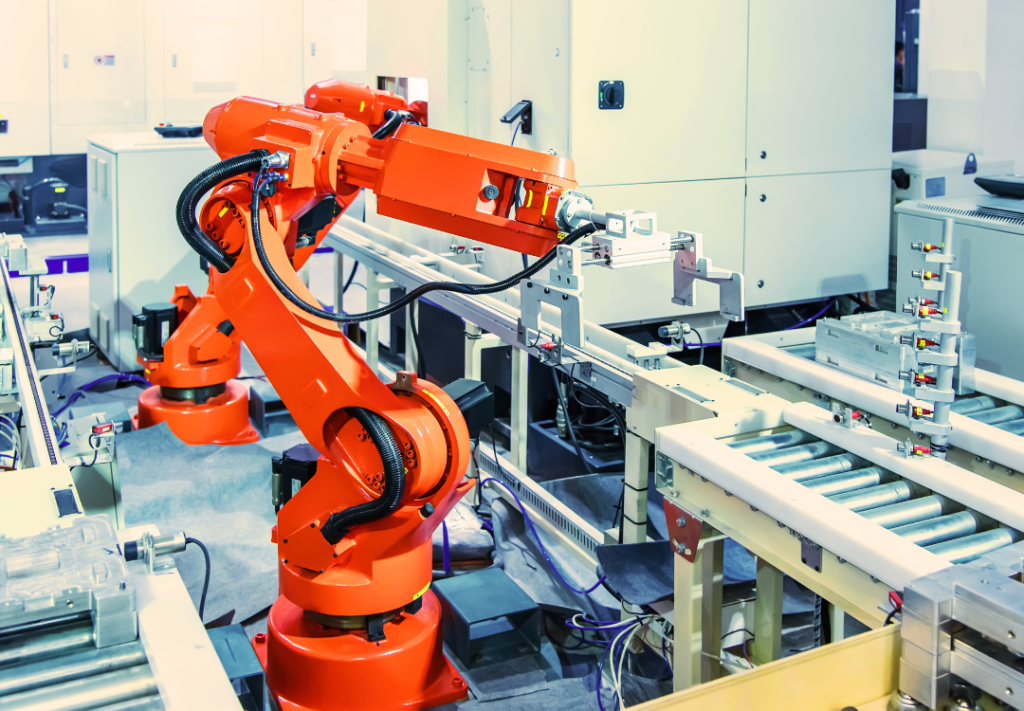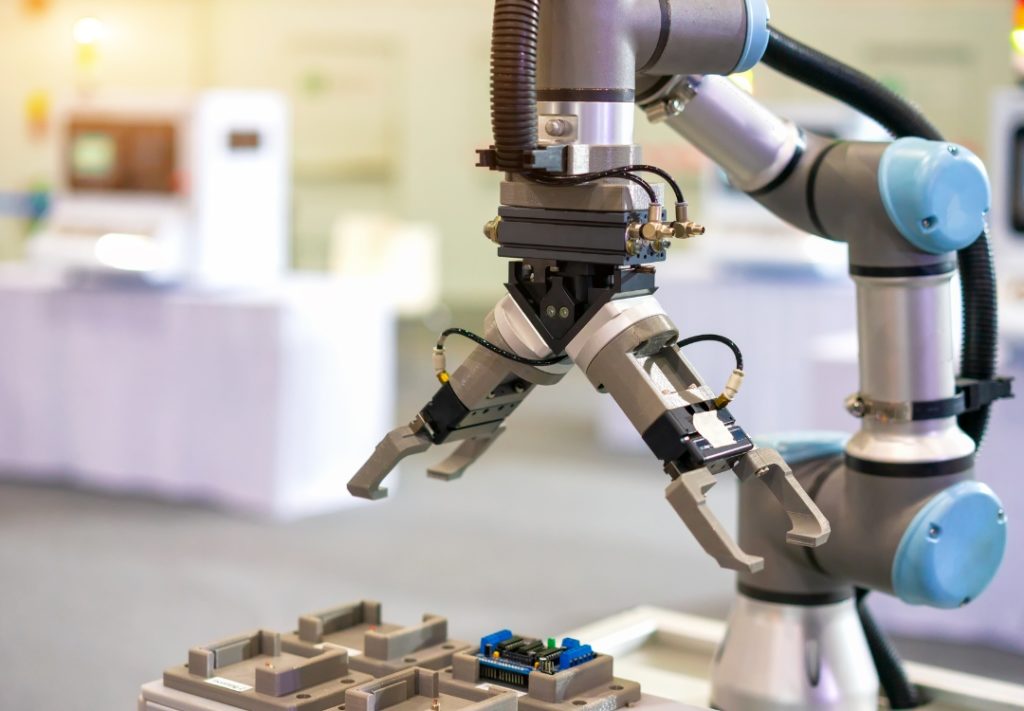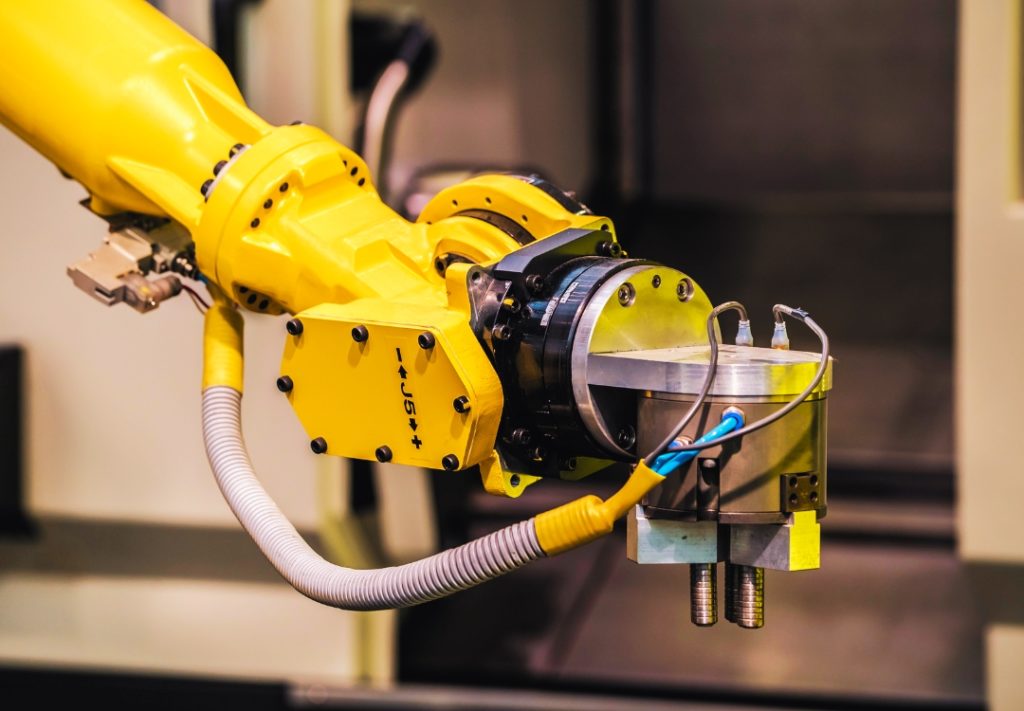
Introduction to Cobots: Exploring Collaborative Robots
The broad adoption of robotics has become an indispensable tool for modern industries, offering numerous advantages that continue to drive innovation and advancements across various sectors.
Holding tremendous potential due their ability to perform a broad range of tasks in real-world environments, the robotics landscape has gained momentum with a number of robotic startups emerging each day.
Collaborative robots, known by the shorthand ‘Cobots’, assist humans in various tasks to enhance productivity and efficiency. This variety of robots is designed with advanced sensors and safety features to detect humans and work with collaboratively whilst avoiding any collisions.
Powered by augmented intelligence(AI), Cobots work in close proximity to humans across industries to streamline work and elevate capabilities.
Due to the increasing adoption of cobots for various applications, it is clear to point out that there were a range of tasks that needed to be addressed and have now been simplified with collaborative robotic solutions.
Karkhana.io’s commitment to excellence in manufacturing ensures that each cobot component is engineered with precision and durability in mind. Whether it’s grippers, arms, sensors, or any other vital cobot part, our team of skilled engineers and technicians work to deliver products that exceed industry standards and elevate your automation capabilities to new levels.
The Rise of Cobots: Understanding its Evolution
The emerging trends in the technological landscape have brought advanced solutions with safer alternatives.

Although the idea of having a robot work collaboratively with employees was explored in 1970’s, the lack of technological advancements and implementation of practical applications was challenging.
Eventually, the first cobot was invented in 1996 by J. Edward Colgate and Michael Peshkin, with their first patent filed in 1999.
Ultimately, in the early 2000’s, the concept of cobots started gaining traction as advancements in robotics and sensor technology allowed for more sophisticated human-robot interaction.
Companies like ABB and Universal Robots introduced some of the first commercially available cobots. These early cobots were designed to work safely alongside humans without the need for traditional safety barriers.
Advantages of Cobots: How Collaborative Robots Transform Industrial Workspaces
As cobots minimise deployment costs, they are quite suitable for small and medium sized enterprises (SME’s) with limited resources. Due to its affordable nature and easy integration, cobots have improved employee satisfaction, inculcating a positive work environment where employees feel supported, rather than threatened by automation.
Smoother Human-Robot Collaboration:
Cobots are equipped with advanced sensors and AI, allowing them to interact and collaborate more naturally with human workers. This leads to better teamwork and communication on the factory floor.
Enhanced Ergonomics:
By taking over physically demanding tasks, cobots help reduce the risk of repetitive strain injuries and other musculoskeletal disorders in human workers, improving overall workplace ergonomics.
Flexible and Easy Solutions:
Relocation of cobots is a comparatively easy procedure due to their simplified assembling and disassembling. They are also easily programmable and adaptable to various tasks. They can be quickly reprogrammed and redeployed for different applications, providing cost-effective solutions for changing production needs.
Relatively safer than industrial robots:
Traditional robots require safety cages to isolate them from humans in order to prevent any entry into dangerous areas. As cobots are intended to work collaboratively with individuals, they are programmed with easy-to-use safety features, allowing operators to control them easily.
At Karkhana.io, our dedication to customer satisfaction drives us to provide unmatched engineering support and supply chain management, ensuring a smooth and hassle-free experience. We believe that our client’s success is our success, and we are committed to being a trusted partner in embracing the future of industrial automation.
Cobots vs. Traditional Robots: Unravelling the Differences
Workspace Barriers:
- A traditional robot performs tasks without human control, operating differently within closed fences.
- A cobot is designed to work alongside human workers without the need for safety barriers, fostering direct human-robot collaboration.
Safety Features:
- Industrial Robots may have safety features, but they are usually limited to basic emergency stop buttons and safety barriers.
- Cobots are equipped with advanced safety features, such as force and torque sensors, collision detection, and immediate stop capabilities when encountering obstacles or humans.
Cost:
- Industrial Robots are often more expensive, especially when considering additional safety measures and specialised programming requirements.
- Cobots are generally more affordable and cost-effective for smaller businesses due to their simpler setups and ease of deployment.

Manufacturing processes of Cobots:
CNC Machining:
Cobots have intricate designs that involve complex geometry and shapes. Certain components of cobots, such as line items, linkages, end-effectors and manipulators require precision manufacturing with tight tolerances to meet the required specifications.
Sheet Metal Fabrication:
The outer body structure of a cobot requires high-quality surface finishes. Sheet metal fabrication allows customisations that suit the specifications of a cobot to meet the versatile requirements. This efficient manufacturing process provides seamless integration with other components whilst adapting to the design and fabrication processes.
Injection moulding:
Mounts and end-effectors of a cobot are components that require design flexibility and customisations. Injection moulding allows integration of complex features, incorporating multiple of them into a single part whilst simplifying the overall design. It is a cost-effective method that provides high-volume production options with scalability.
3D Printing and Moulding:
These manufacturing techniques are incorporated to manufacture grippers, providing sustenance and strength along with enhanced performance. It also encompasses faster production whilst eliminating the need for expensive tooling and setup costs.
Karkhana.io utilises advanced technologies such as CNC machining, 3D printing, and injection moulding to create parts that perfectly align with your specific application needs. From rapid prototyping to mass production, our streamlined manufacturing processes ensure fast turnaround times without compromising on quality.

Training and Programming Cobots: Empowering Workers to Work Alongside Robots
Industrial robots require certain level of knowledge in coding and programming to operate, which requires costly training and education.On the other hand, cobots can be more seamlessly integrated into the workspace with their user-friendly programming and easy task-switching.This eventually helps in upskilling the workforce whilst overcoming technological fear by providing workers with comprehensive knowledge about cobots and their capabilities.
By prioritising training and programming, manufacturing companies can empower their workforce to work harmoniously with cobots. The combination of human expertise and robotic precision results in enhanced productivity, improved product quality, and a safer work environment. As cobots continue to shape the future of industrial automation, investing in the training and development of the workforce is a key step in unlocking their full potential.
Future Trends in Cobots: Predictions and Possibilities for Industrial Automation
Advancements in artificial intelligence (AI) will empower cobots with more sophisticated decision-making capabilities along with seamless human robot interaction. Whilst adapting to dynamic production environments, cobots will evolve to handle multiple complex tasks with advanced algorithms.
The future prospects of cobots hold immense promise and great potential due to its versatility. Cobots will find applications in diverse sectors, boosting efficiency and innovation.
With the integration of AI one step at a time, cobots can one day become partners from collaborative robots.
The future of manufacturing with cobots is all about synergy, combining the strength of automation with human ingenuity. Karkhana.io believes that embracing this collaborative approach will not only optimise production but also empower your workforce to focus on high-value tasks that drive innovation.

Overcoming Challenges: Addressing Limitations and Implementation Hurdles
While collaborative robots (cobots) have gained widespread popularity in industrial automation, their implementation is not without challenges. As manufacturers continue to explore the benefits of cobots, they must also address and overcome various limitations and hurdles to ensure successful integration. Here are some key challenges and strategies for effectively addressing them:
Cobots are not suitable for high-volume production:
Some cobots may have limitations in terms of payload capacity and reach, restricting their suitability for certain tasks. In this case, it becomes necessary to assess the specific application requirements and choose cobots that match the necessary payload and reach capabilities. In some cases, deploying multiple cobots for collaborative work can overcome these limitations.
Cobots are speed limited:
One common limitation of cobots is their speed compared to traditional industrial robots. While cobots prioritise safety and human-robot collaboration, their reduced speed can be a concern in certain high-throughput or time-sensitive applications.
To boost the speed of cobots, manufacturers can adopt task optimisation, reduce payload and upgrade end effectors. Multi-cobot systems and strategic placement can further enhance productivity. By embracing continuous improvement and feedback, cobots can become even more efficient in industrial automation environments.
Cobots may not always be as efficient as industrial robots:
Cobots might not always match the efficiency of industrial robots due to factors such as limited payload capacities, lower maximum speeds, and the need for additional safety features to work alongside humans. They may require more complex programming and training, leading to longer setup times.
How can Karkhana.io help you manufacture Cobot components?
In today’s fast-paced manufacturing landscape, cobots have emerged as a game-changing solution, redefining how industries operate. As a forward-thinking manufacturing company, we are committed to being at the forefront of this technological revolution, providing top-of-the-line cobot components that empower business for the future.
Karkhana.io possesses the manufacturing capabilities that adapt to the market dynamics with agility and precision.
Our flexible manufacturing services enable product efficiency and quality across orders of all sizes from small batches to large volumes, whilst solving complex product assembly and localization issues.
If you’re looking for a robotics components manufacturer that meets the technical capabilities whilst incorporating quality control systems, contact us today! Optimise your operations with Karkhana.io‘s expertise in manufacturing high performance components that meet industry standards.
Let us help you reach the optimal outcome for all your manufacturing requirements. To get started, simply email Alay Shah on alay@karkhana.io with your specifications or fill out the form below.










